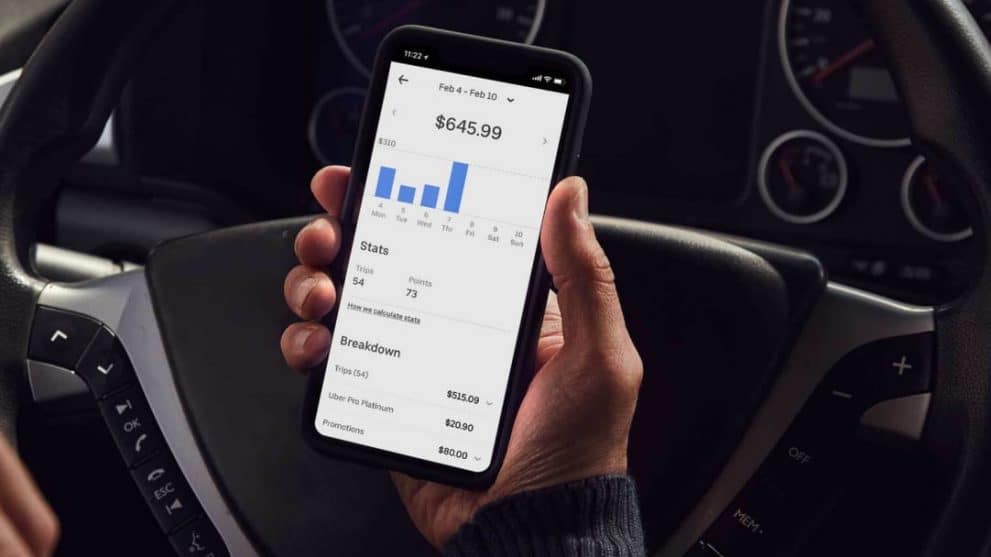
It’s been two and a half years since Uber Technologies (Uber Technologies Stock Quote, Charts, News, Analysts, Financials NYSE:UBER) went public and for investors who got in early the results have been less than inspiring. What’s missing from the Uber story? Profit, says Brett Girard of Liberty International Investment Management.
“Uber is ubiquitous, it’s sort of everywhere, but if you look at the stock price it’s a more challenging investment than it is a product that that we might use,” said Girard, chief financial officer at Liberty International, who spoke on BNN Bloomberg on Monday.
Uber reported third quarter financial results last week, showing a net loss of $2.4 billion, which the company said related to investments including its stake in Chinese vehicle for hire company Didi. Overall, revenue was up 72 per cent to $4.8 billion and gross booking on Uber’s platforms including ride and delivery services ballooned by 57 per cent year-over-year to $23.1 billion.
The $4.8 billion topline was better than the consensus expectation at $4.4 billion but the loss per share of $1.28 was much more than the Street’s call for a loss of $0.33 per share. At the same time, Uber touted its positive adjusted EBITDA of $8 million compared to a loss of $517 million a quarter ago and an EBITDA loss of $633 million a year ago.
“Our mobility segment is hitting highs in terms of margin,” said Uber CEO Dara Khosrowshahi in a CNBC interview on Thursday. “Uber Eats — outside of the investments that we’re making and some of the new verticals like grocery — hit EBITDA profit margins. The whole company is EBITDA profitable, so we’re really pleased not only with where the company is now but also the road ahead. The supply situation is getting much much better. So all signals right now are pointing to green.”
The market so far seems uninspired, however, with the stock still registering a loss for the year of about 11 per cent. Since its debut in May of 2019, UBER has returned a grand total of seven per cent.
And the longer this story plays out, the more dubious the prospects might grow for the stock. As the typical account of a tech company’s ascension goes, developing and perfecting the product costs a lot of money and a company may lose billions in that development stage, even as it expands its offerings to wider and wider segments of the population. The prize at the end, it’s said, is the money rush that is expected to come once scale is reached.
But for Uber, Girard says while the transformative nature of its platform is undeniable, the fact that profitability is still an issue even after the expansion of operations worldwide, well, that’s a problem on which investors should be focusing.
“This is one of the challenges with some of these new technologies. If you think back to the dot-com bubble, everyone talks about the tech stocks but the market cap losses from the cable companies that laid miles and miles of fibre so we could all have internet was significantly more than some of the Pets.com or the names like that,” Girard said.
“And if you look at Uber and Lyft, it’s sort of reminiscent of that. They’ve gone out and they’ve absolutely disrupted the medallion taxi system. They’ve made it so that not only people can be transported around but their goods in terms of Uber delivery and UberEats can be transferred in a very inexpensive way. But they’ve yet to do it profitably,” he said.
“They’ve continued to grow, and the argument that we hear is, we’ll get a little bit larger, we’ll hit scale and then all the profits will fall to the bottom line,” Girard said. “This is a large company, right? It’s almost $100 billion market cap and they’re still not profitable. So maybe if they could hit a trillion dollars in market cap, there’s going to be money that will flow to the bottom line.”
“At this point. It’s a great service, a great utility, but they haven’t figured out how to drive those dollars to the bottom line and make it a worthwhile investment,” he said. “There’s something missing there, right? You could argue that they’re at scale, and if they’re at scale then they should be profitable.”
Uber’s business breaks down into Mobility and Delivery, with the company’s Freight segment taking up a smaller percentage of the business. For the third quarter, revenue for Uber Mobility was up 62 per cent to $2.205 billion compared to the pandemic-affected third quarter last year, while Delivery was up 97 per cent to $2.238 billion. Freight was up 40 per cent to $402 million. Mobility was the only segment to hit positive adjusted EBITDA at $544 million versus Delivery at negative $12 million and Freight at negative $35 million.
Leave a Reply
You must be logged in to post a comment.




 Share
Share Tweet
Tweet Share
Share




Comment